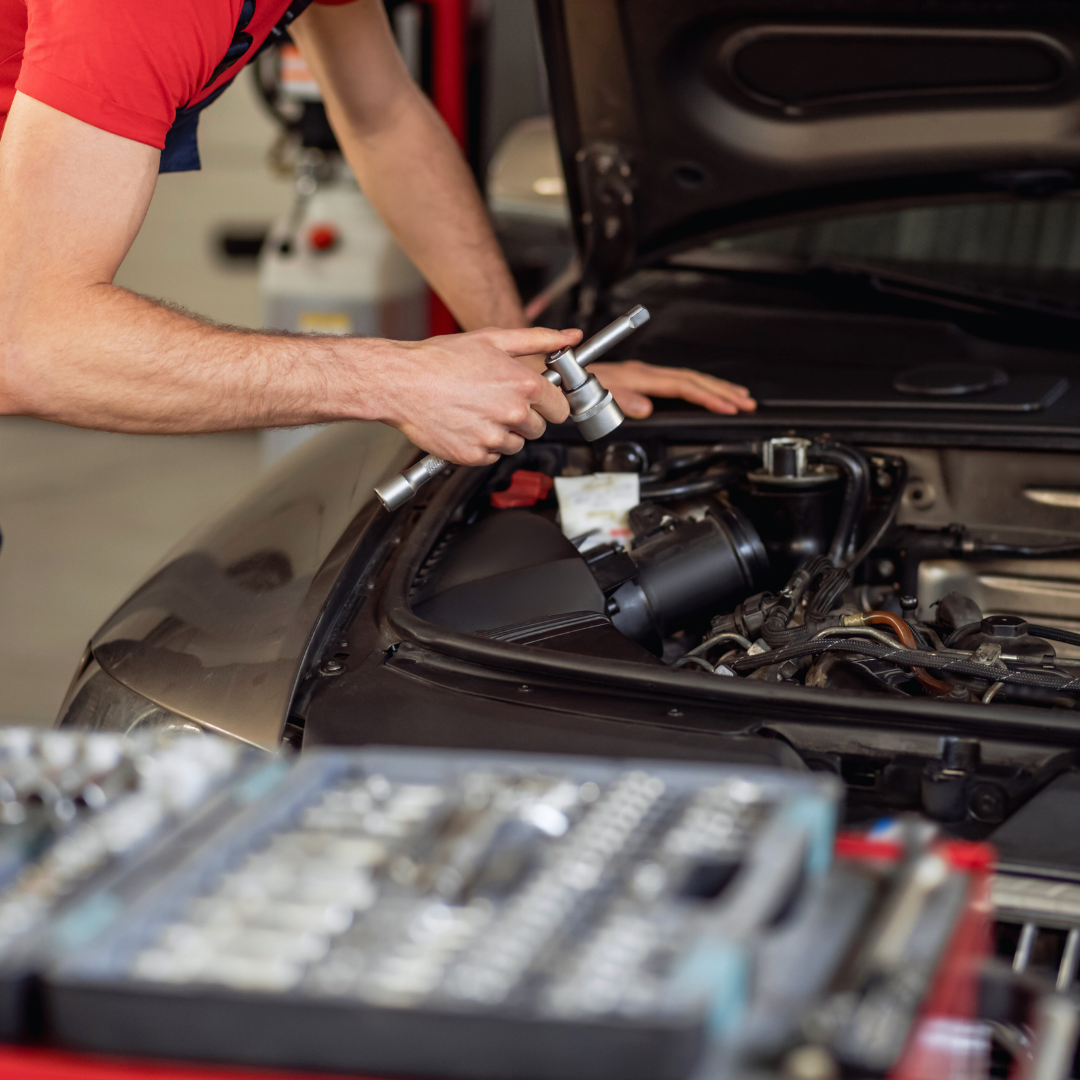Essential Tools Every Car Owner Should Have for Efficient Maintenance and Repairs

Every car owner should be prepared for both routine maintenance and unexpected challenges on the road. Essential tools empower individuals to handle minor repairs, perform regular upkeep, and ensure safety while driving. With the right set of tools, they can save time and money by addressing issues before they escalate.
Many car owners may underestimate the importance of having a well-stocked toolkit. Simple items like a tire pressure gauge, jumper cables, and a basic set of wrenches can make a significant difference in managing a vehicle’s health. Owning these tools not only fosters confidence in handling car-related tasks but also enhances the overall driving experience.
Being equipped with the necessary tools allows car owners to take charge of their vehicle’s care. Investing in a quality toolkit ensures they are ready to tackle common issues with confidence, knowing they can protect their investment and ensure safer travels.
Essential Maintenance Tools
Every car owner should have specific tools for maintenance tasks to ensure their vehicle operates smoothly. These essential maintenance tools enable prompt repairs and routine checks, increasing safety and longevity.
Car Jack and Jack Stands
A car jack is crucial for lifting a vehicle, allowing access to the undercarriage, tires, and brakes. There are several types, including hydraulic jacks and scissor jacks, but hydraulic jacks are generally more reliable and easier to operate. Once the car is lifted, using jack stands is essential for safety.
Jack stands support the vehicle while work is being done underneath it, preventing accidental drops. It’s critical to ensure that both the jack and the stands are rated for the vehicle’s weight. A combination of a reliable car jack and sturdy jack stands is a fundamental safety measure for any car owner.
Wrench Set
A versatile wrench set is indispensable for various mechanical tasks. Wrenches come in different sizes, and having a complete set (including both standard and metric sizes) allows for greater flexibility when working on different vehicles.
Open-end wrenches are great for quick jobs, while socket wrenches provide better torque and are ideal for tightening and loosening bolts. It’s beneficial to select a set made from durable materials, such as chrome vanadium, which ensures longevity and resistance to corrosion.
Screwdrivers and Pliers
A good assortment of screwdrivers and pliers is essential for quick fixes and adjustments. Screwdrivers should include various sizes and types, such as flathead and Phillips, to tackle different screws commonly found in vehicles.
Pliers, particularly needle-nose and adjustable types, are useful for gripping small parts and making tight turns. Look for screwdrivers with comfortable grips and magnetic tips for easier handling, and ensure that pliers have a strong construction for durability during repeated use.
Oil Filter Wrench
An oil filter wrench is a specialized tool that simplifies the process of changing oil and oil filters. This tool allows for easy removal of the filter without damaging it or creating a mess.
Different types of oil filter wrenches are available, including strap wrenches and cup wrenches, which cater to various filter sizes and shapes. This tool is particularly useful for car owners who perform oil changes themselves, as it ensures that the filter is adequately secured.
Tire Pressure Gauge and Tread Depth Tool
Maintaining proper tire pressure is vital for vehicle safety and fuel efficiency. A tire pressure gauge provides accurate readings, allowing users to adjust the pressure to the manufacturer’s recommendations.
In addition to pressure, monitoring tread depth is equally important for safe driving. A tread depth tool is simple to use and can quickly indicate whether tires need replacing. Both tools are necessary for ensuring optimal tire performance, enhancing safety, and prolonging tire life.
Emergency Roadside Equipment
Having the right emergency roadside equipment can make a significant difference during unexpected automotive issues. These tools can aid in a quick response to problems, ensuring safety and convenience.
Jumper Cables or Portable Battery Jump Starter
Jumper cables are essential for reviving a dead battery. It is important to choose a heavy-duty set that can handle various vehicles. They typically come with insulated clamps for safety and a length of at least 12 feet, allowing for flexibility in positioning.
A portable battery jump starter offers an even simpler solution. This compact device can jump-start a vehicle without needing another car. Look for one with an ample charge capacity, and consider models with built-in USB ports for added functionality.
Tow Strap
A sturdy tow strap is crucial for emergencies involving towing a disabled vehicle. It should be rated for the weight of the vehicles it will connect, often a minimum of 10,000 pounds for standard cars.
Look for one made from durable nylon or polypropylene with reinforced loops. It is important for the strap to have reflective stitching or bright colors for visibility. Clear instructions for proper usage are often included, which is helpful in tense situations.
Flashlight and Batteries
A reliable flashlight is indispensable during nighttime emergencies. It should provide bright illumination, with LED options offering excellent brightness and longer battery life.
Selecting a flashlight with multiple settings (like strobe or SOS mode) can enhance safety. Additionally, rechargeable models can be a cost-effective option, but having a supply of extra batteries nearby is critical to avoid being left in the dark.
Reflective Safety Triangles or Flares
Reflective safety triangles or road flares play a vital role in ensuring safety at the scene of a breakdown. They alert other drivers to a disabled vehicle, reducing the risk of accidents.
Reflective triangles are lightweight and easy to set up, providing a visible warning from a distance. Flares, while more traditional, can provide both light and signal; disposable options are available for convenience. Checking and replacing these items periodically ensures they are functional when needed.
Car Care Supplies
Car care supplies are essential for maintaining a vehicle’s appearance and prolonging its lifespan. These tools help owners keep their cars clean and protected from the elements. Proper care can enhance the vehicle’s value and ensure a pleasant driving experience.
Microfiber Cloths
Microfiber cloths are vital for any car care regimen. They are designed to trap dirt, dust, and grime effectively due to their unique fiber structure. Often found in various sizes, these cloths are versatile for both interior and exterior cleaning.
Using microfiber reduces the risk of scratches on delicate surfaces. They can be used dry for dusting or dampened for wiping down surfaces. Many microfiber cloths are machine washable, making them a sustainable choice for car care.
Key features to look for include:
- Softness: Prevents scratches.
- Absorbency: Ideal for drying surfaces.
- Durability: Can withstand multiple washes.
Car Wash Soap
Car wash soap is specifically formulated to clean vehicles without stripping wax or damaging paint. Unlike household detergents, which can be harsh, quality car wash soaps provide a gentle clean while maintaining a protective layer.
When choosing car wash soap, consider the following:
- pH Balance: Neutral formulas protect wax finishes.
- Foamability: A rich foam helps lift dirt away.
- Environmentally Friendly: Biodegradable options reduce ecological impact.
For those aiming for a thorough and professional clean, visiting a Winnipeg Car Wash or a local facility may offer the advantage of specialized, vehicle-safe products that help maintain both protection and shine.
Bucket and Sponge
A bucket and sponge are fundamental tools for manual car washing. The bucket holds the soapy water, while the sponge is critical for applying soap and scrubbing surfaces.
Choosing the right bucket is important. A large, sturdy bucket prevents spills and holds enough water for rinsing. Many car owners prefer buckets with a grit guard, which helps keep dirt and debris at the bottom.
Sponge selection matters too. A soft, non-abrasive sponge prevents scratches while effectively lifting dirt. Some opt for sheepskin sponges, known for their gentle cleaning action and durability.
Wax and Polish
Applying wax and polish is essential for providing a protective layer on the vehicle’s finish. Wax offers a barrier against UV rays, bird droppings, and other contaminants.
Polish, on the other hand, restores the shine and removes light scratches. Regularly polishing a car enhances its appearance and increases resale value.
When selecting wax, owners can choose between paste, liquid, or spray forms, each with its own application style. For polish, look for products designed for specific paint types to ensure compatibility.
In both cases, following the manufacturer’s application instructions is crucial for achieving optimal results.
Diagnostic Tools
Diagnostic tools are essential for car owners to effectively monitor and maintain their vehicles. They provide insights into the vehicle’s performance and help identify issues before they escalate.
OBD-II Scanner
An OBD-II scanner is a vital tool for diagnosing vehicle issues. This device connects to the car’s onboard diagnostic system, allowing users to read error codes generated by the engine control unit (ECU).
- Easy to Use: Most OBD-II scanners feature a user-friendly interface that simplifies diagnostics.
- Code Reading: They provide trouble codes that indicate specific malfunctions, aiding in quick repairs.
- Live Data: Many models offer live data streams for real-time monitoring of engine parameters.
Investing in a quality OBD-II scanner can save time and money by enabling informed decisions regarding repairs.
Tire Pressure Monitoring System (TPMS) Tool
A TPMS tool is essential for maintaining proper tire pressure, which is crucial for safety and fuel efficiency. This tool measures tire pressure and alerts users to any discrepancies.
- Safety First: Proper tire pressure prevents blowouts and improves vehicle handling.
- Improved Efficiency: Maintaining optimal tire pressure can enhance fuel economy significantly.
- Ease of Use: Most TPMS tools allow users to quickly check tire pressure and reset the monitoring system.
Regular use of a TPMS tool can extend tire life and ensure a smoother driving experience.



0 Comments